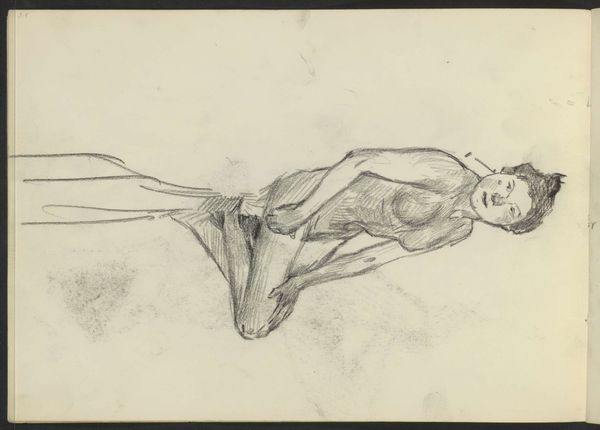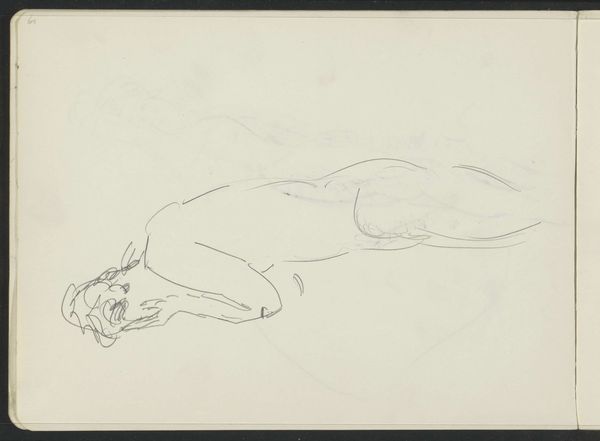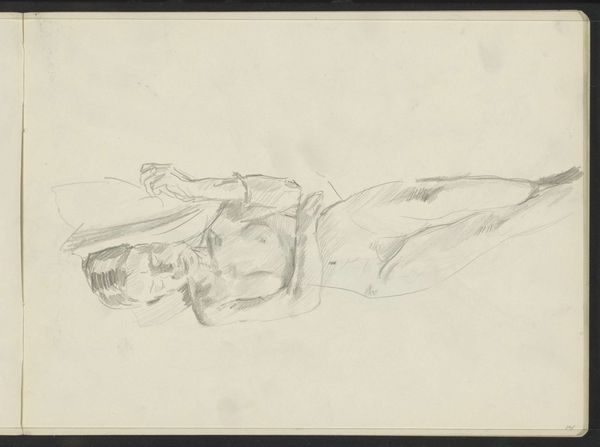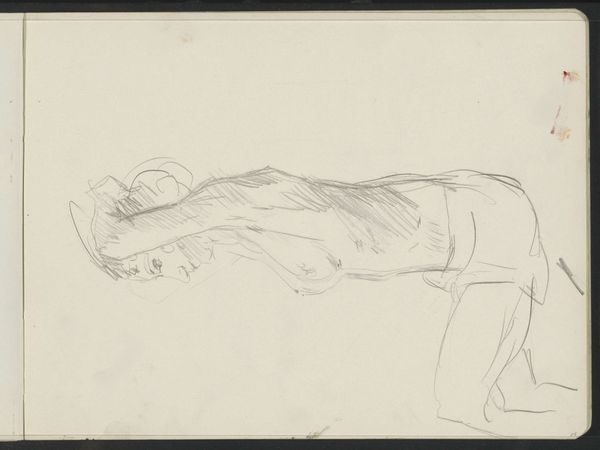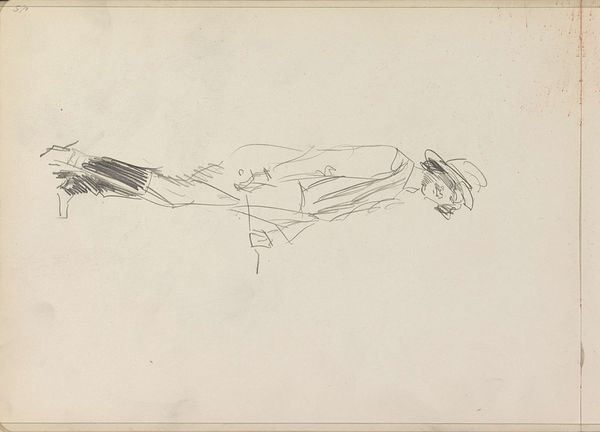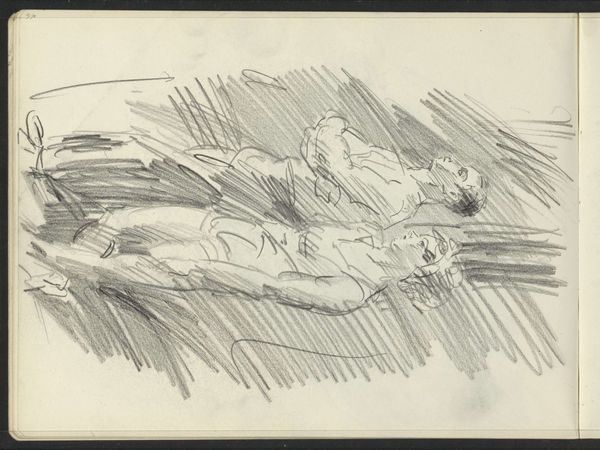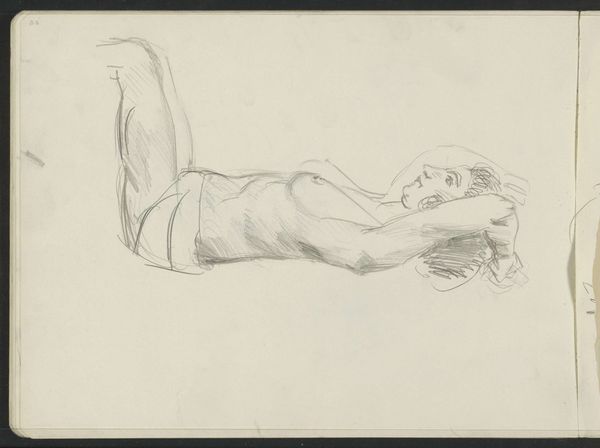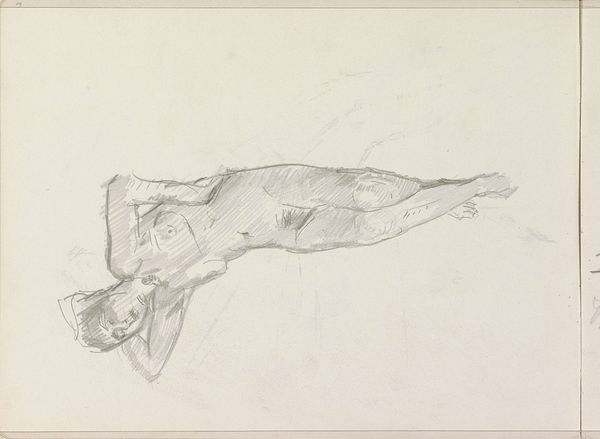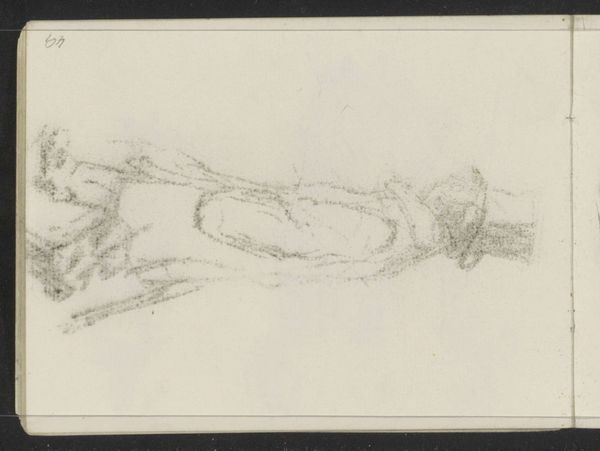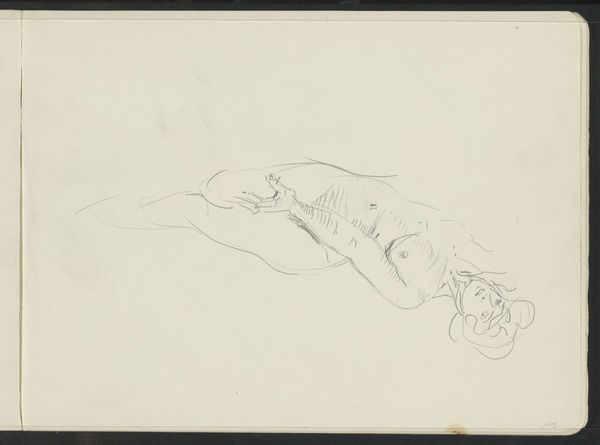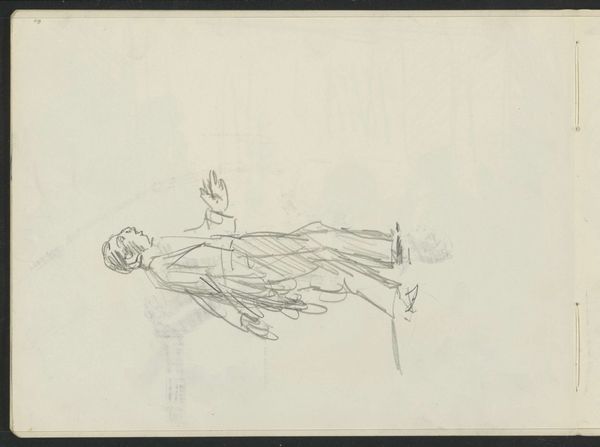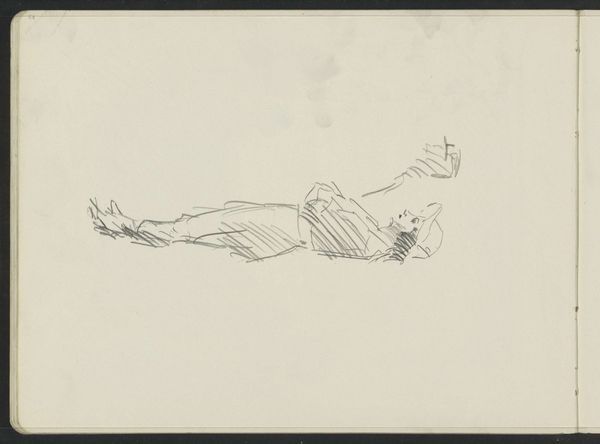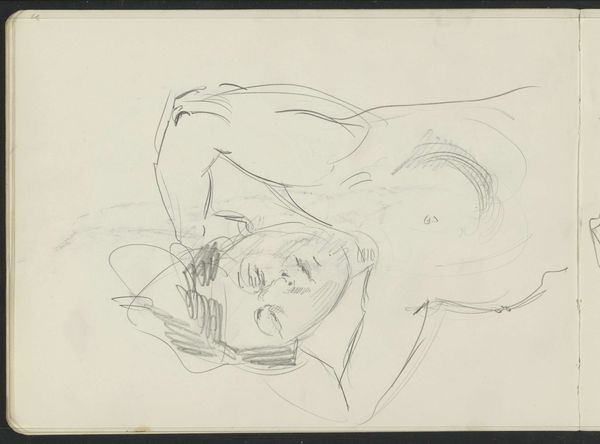
drawing, pencil, graphite
#
portrait
#
drawing
#
pen sketch
#
figuration
#
ink drawing experimentation
#
pencil
#
graphite
#
nude
#
realism
Copyright: Rijks Museum: Open Domain
Editor: Right, next up we have "Standing Female Nude" by Isaac Israels, probably made sometime between 1915 and 1925. It's a graphite and pencil drawing, and to me, it feels incredibly intimate – like catching a private moment. What catches your eye when you look at this work? Curator: Intimate, yes, that's precisely the word. It's that fleeting, sketched quality, isn't it? Almost like catching a glimpse of a thought. For me, it’s all about the line. Notice how Israels isn’t striving for photographic realism; instead, there’s a deliberate looseness, a suggestion of form rather than a precise definition. He’s more interested in capturing the essence, the energy of the figure, than in rendering every detail perfectly. It feels incredibly modern in that regard. Do you get a sense of movement even though the figure is still? Editor: I do see the energy, the sketchiness. It is more about expression than exactness, right? It also feels somehow incomplete, like a work in progress, almost as if the artist has given up before completing it. Is it like this or it is something which gives its artistic value? Curator: Absolutely! That "incompleteness" is key. It invites us, the viewers, to participate, to fill in the gaps. Think of it as a collaborative act. This wasn't meant to be a polished, finished piece displayed at a salon. It’s a glimpse into the artist’s process, his way of seeing and understanding the human form. Perhaps he captured the key lines he wanted, so there was no need for him to finalise the picture with excessive rendering. And isn’t there a strange beauty in that? That it freezes in a moment his subjective interpretation and we become part of the experience? Editor: I see what you mean! So, it's less about the 'what' and more about the 'how' – how Israels perceived and translated the figure. Thanks, I am beginning to see a very complex piece beneath an effortless facade. Curator: Exactly! It’s like glimpsing a private language, isn’t it? A conversation between the artist and his subject, now open for us to eavesdrop on.
Comments
No comments
Be the first to comment and join the conversation on the ultimate creative platform.
